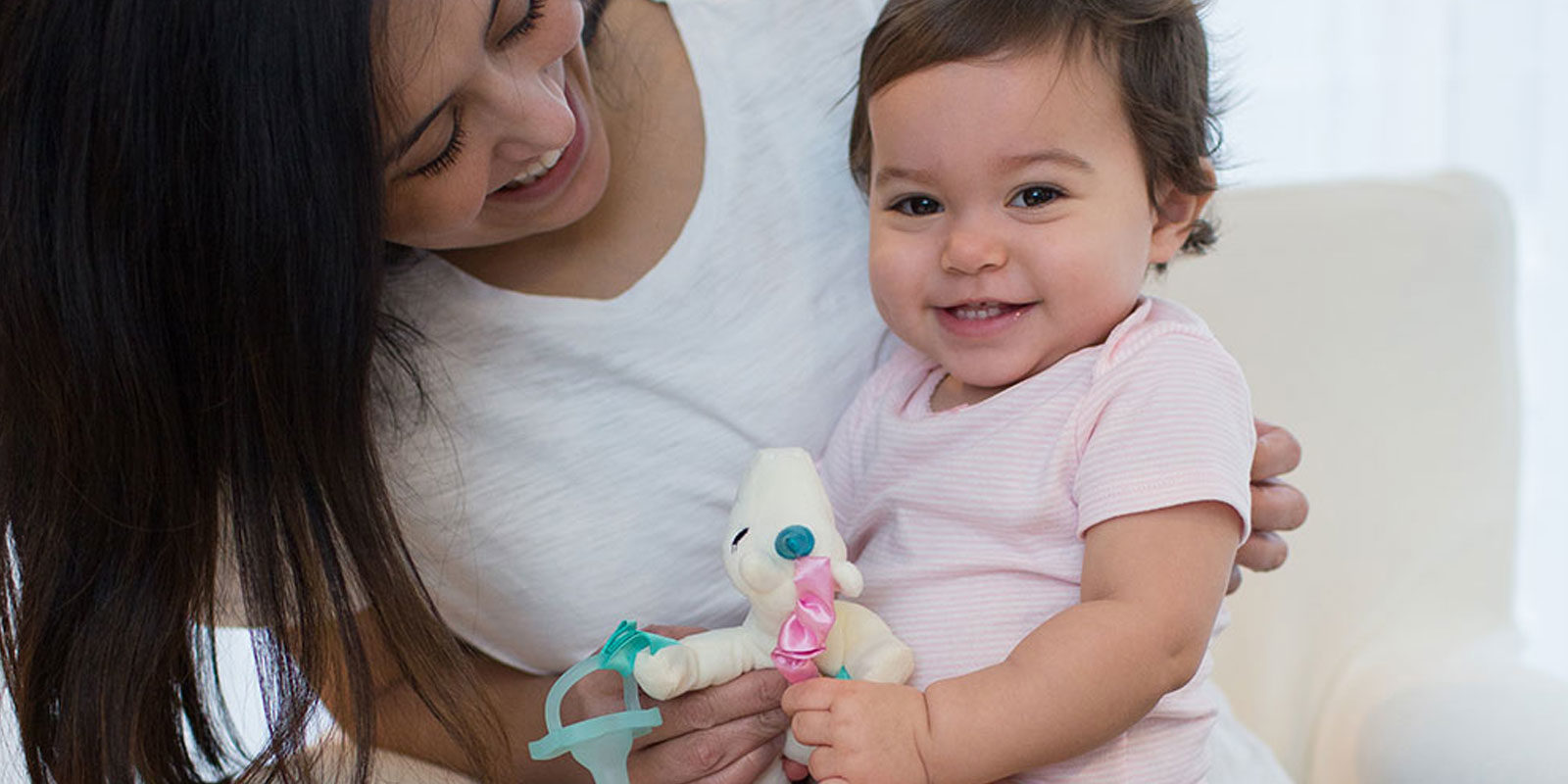Why Every Baby Should Have a Transitional Object
You wrapped yourself up in it. You squeezed it close to your heart. You carried it everywhere with you. It was your stuffed bear, baby blanket, or beloved toy. And for some of us, it sits in the attic or closet, safely tucked away to be brought out every now and again during hard times.
You may have called it by a different name, but it was your lovey. And every baby should get the chance to love one.
What is a Lovey?
On the surface, a lovey is a transitional object that provides comfort, soothing, and self-awareness to young children and babies1. Deep down, a lovey is a mirror for your child’s own feelings and needs that he wants to understand. It’s his way of working things out, getting a handle on his emotions so he can self soothe. A lovey is so much more than an object: It’s a dear friend.
Benefits of a Lovey
There are a ton of emotional and developmental benefits of having a lovey. It can be a good sign if baby gets attached to an object; it shows there’s a strong bond between you and him, allowing him to in turn develop other strong bonds throughout life2. Here are a few more perks:
- As baby grows, his lovey becomes an impartial means of exploration, helping him engage in fantasy. He can express his feelings freely, something we all need a little more of.
- Lovey is there when mom or dad can’t be, helping your little one navigate transitions as small as going to grandma’s or as big as his first day of preschool.
- A lovey encourages baby to learn how to adapt in an ever-changing world. We all have items (or rituals) that ground us, make us feel like the floor isn’t constantly moving; a lovey does the same for your child.
- His lovey can also carry him through scary situations like going to the doctor. If his friend can get through an exam, so can he.
- With the Dr. Brown’s® Lovey, there’s a bonus: It keeps baby’s pacifier or teether off the floor and near baby, so they’re never far away from soothing.
Ultimately, your little one’s lovey is teaching him how to interact in and maintain social relationships in the future, helping him to create a more fulfilled and rewarding life.
When to Introduce a Lovey
After around two months, your new baby will begin to open and close her hands. She will start exploring what those wriggly things are for, attempting to grasp soft objects like stuffed animals. This is a great time to give her a cozy lovey like Dr. Brown’s® Lovey Pacifier & Teether Holder in a supervised setting, so she can feel the different textures, warmth, and squeezable softness. The added benefit? The Dr. Brown’s Lovey comes with the Dr. Brown’s® HappyPaci™, the pacifier shaped like Dr. Brown’s bottle nipples. Not only does that help from an acceptance standpoint, but it’s double the soothing! She gets reassurance from her Lovey and soothed by the HappyPaci. The Velcro straps keep the HappiPaci securely in place, so baby is never far away from either. Plus, the pacifier is removable and can be replaced by teethers, other similarly shaped pacifiers, or nothing at all.
As baby grows to between six months and a year old, she will start to gain a new level of independence from improved mobility. She’s also starting to recognize that she is an individual – an exciting time that can also be a bit scary for her. She may want to attach herself to a comfort object – AKA Lovey – to help ease some of her anxieties with her newfound freedom.
In the end, it’s up to your baby whether she will attach herself to something and what she attaches to. Just provide her with options; she’ll do the rest. Once introduced, this friend will follow her through toddlerhood and into childhood.
Concerns with Lovies
That adored item of comfort can so quickly turn into the source of a major meltdown. Left it at home, left it at school, left it on the plane at the start of the first vacation you’ve gotten in years. It might be tempting to limit where your little one can take his lovey, but that may not be the best option.
Limitations or critiques may end up actually creating attachment issues later in life; research suggests that when we’re deprived of our special object, we can become more susceptible to mental and emotional problems down the road3.
Here’s a tip from veteran parents: When you see baby starting to get attached to a particular toy, grab a few extras from the store and intermittently switch them out so they are just as grubby. If he leaves it somewhere, you still have at least one spare.
Over time, lovey will become less of a crutch as real friendships begin to take its place. Around four or five years old, kids start to develop stronger coping skills and meet their social needs through friendships with other real kids4. Plus, their friends are most likely no longer toting around their own lovey; your child is likely to follow along.
Lovies rightfully earn their name. They are a little one’s way of navigating a big, complex, changing world that often doesn’t make sense. They help breed independence as well as strong bonding skills. So next time Aunt Mary wants to get your little one a soft, lovable something like the Dr. Brown’s Lovey, let them! For any questions on this and other Dr. Brown’s products, feel free to reach out.
